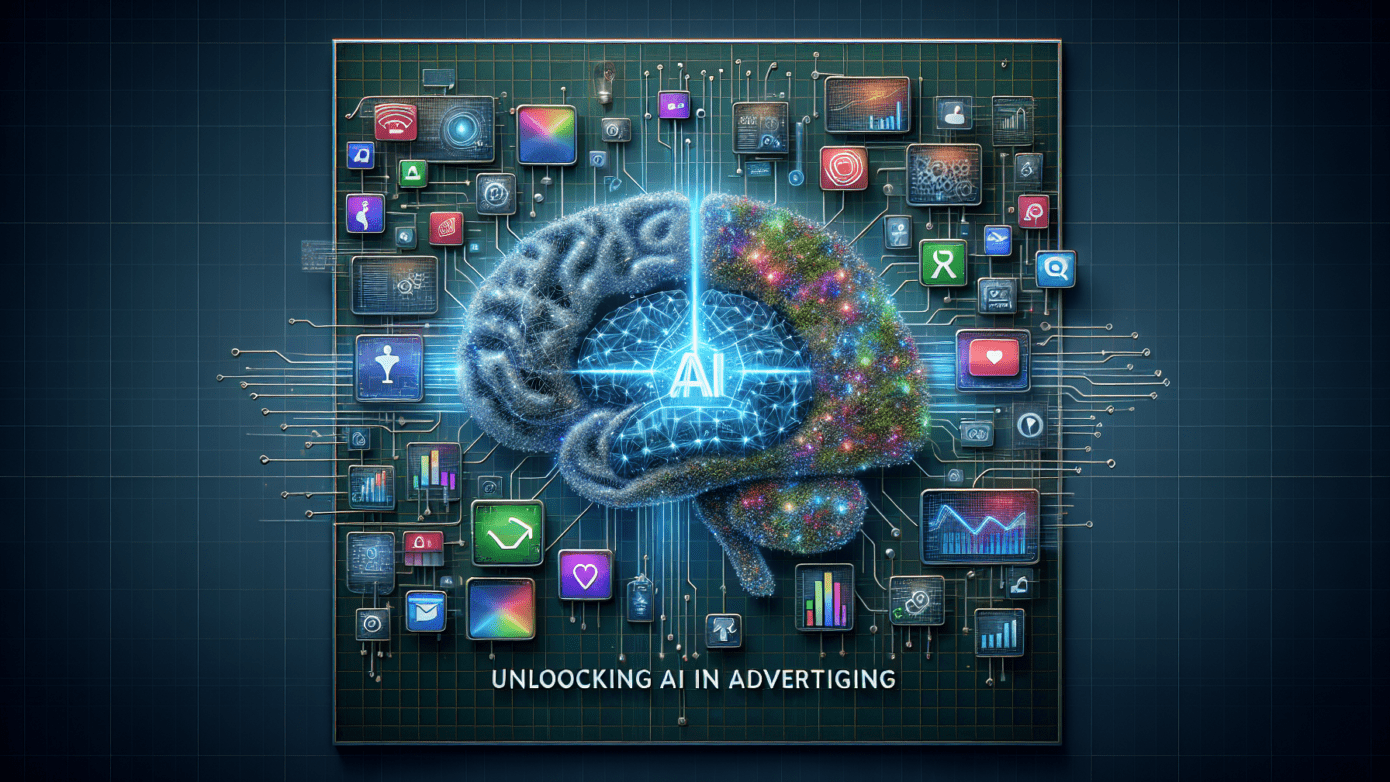Are you a solopreneur struggling to connect with your audience? You’re not alone. Many small business owners face this challenge. Luckily, AI in advertising opens new doors. Recent studies show that 72% of marketers trust AI to enhance audience targeting. Imagine using smart tools to find exactly who wants your product! In this article, I will explore how you can use AI to unlock effective marketing strategies. Let’s dive into how you can transform data into insights and boost your ads!
Understanding Audience Targeting with AI
In the ever-evolving world of digital marketing, understanding your audience is paramount, and AI in advertising offers innovative strategies for achieving precise targeting. The role of data in AI targeting is foundational; insights drawn from demographics, interests, and online behaviors enable brands to segment audiences effectively.
What data types are used in AI? AI leverages various data types to create nuanced audience profiles, including demographic data such as age, gender, and location. Behavioral data, which encompasses user interests and online activities, further refines targeting. With over 70% of marketers citing customer engagement as a primary target in their advertising efforts, the necessity for comprehensive data cannot be overstated.
Where can you find audience data? Quality data can be harvested from social media analytics tools like Facebook Insights and Instagram Analytics, which provide detailed reports on audience engagement. Additionally, website traffic can be analyzed through platforms such as Google Analytics and Hotjar. These resources help in understanding visitor behaviors and preferences, enabling marketers to tailor their campaigns effectively.
By harnessing the potential of AI-driven targeting strategies, brands can engage the right consumers at the right moments, leading to increased conversion rates and a more impactful advertising return on investment. For deeper insights into the importance of audience targeting in AI advertising, refer to this insightful resource.
How AI Algorithms Enhance Audience Segmentation
What are AI algorithms? AI algorithms refer to computational methods that allow computers to learn from and make predictions based on data. These algorithms often utilize machine learning models that identify patterns within large datasets, essentially teaching machines to recognize and predict behaviors without explicit programming. For instance, clustering algorithms, such as K-means and hierarchical clustering, group users with similar characteristics, enhancing the ability to segment audiences effectively.
Real-world applications, like Facebook's advertising engine, illustrate the power of AI in driving audience targeting. Facebook uses AI algorithms to analyze extensive user data, providing advertisers with deep audience insights. By leveraging these algorithms, Facebook can deliver personalized ad experiences based on users' interests, demographic information, and online behaviors, effectively optimizing reach and engagement.
For example, a retailer could use Facebook's audience targeting to reach a demographic segment that frequently engages with similar lifestyle brands. The platform's ability to filter and organize audiences based on complex variables leads to smarter marketing strategies and improved ROI. You can explore more about this in detail through this statistical overview on AI in advertising. Such advancements highlight how AI not only enhances targeting accuracy but also transforms the entire landscape of social media advertising.
Strategies for Effective AI Targeting
Creating detailed buyer personas with AI is essential for refining marketing strategies and optimizing ad spend. Why are buyer personas important? They allow marketers to tailor efforts to specific groups, enhancing engagement and conversion rates significantly. By understanding the demographics, interests, and behaviors of target audiences, brands can create personalized messaging that resonates with each group, ensuring that marketing communications are not only heard but are also actionable.
To utilize AI tools for persona development effectively, platforms like HubSpot, Salesforce, and Google Analytics can be employed. For instance, an AI-driven analysis can reveal patterns in customer data that inform the creation of a nuanced buyer persona. Imagine using Google Analytics to determine that a significant portion of your audience enjoys outdoor activities and engages primarily with eco-friendly products. This insight can guide your marketing strategy to emphasize sustainability in your campaigns.
You can refine your targeting further by leveraging AI insights to build scalable and adaptable buyer personas. Utilizing AI can reveal deeper connections and trends not immediately visible, ensuring that your advertising strategies are both data-driven and highly effective. According to research from McKinsey, companies using targeted messaging based on defined personas saw a 10-20% increase in conversion rates, highlighting the tangible benefits of a personalized marketing approach. For more insights and statistics on how buyer personas shape marketing strategies, check out this relevant resource.
Implement Dynamic Retargeting Campaigns
What is dynamic retargeting? Dynamic retargeting is a tailored approach in digital advertising designed to re-engage users who have shown interest in a product or service but did not complete a purchase or specific action. Utilizing algorithms powered by AI, dynamic retargeting serves personalized ads featuring the exact products or services a user priorly viewed, making it an effective tool in converting potential leads into customers. This strategy has proven to significantly elevate conversion rates and reduce drop-off rates by reminding interested users of their previous interactions, compelling them to complete their purchases.
To create a successful retargeting campaign with AI, one must follow several key steps. First, set up your audience by identifying key segments of users based on their past interactions, such as those who have visited certain product pages or abandoned their shopping carts. This precise segmentation is critical for optimizing ad spend and increasing the relevance of your advertisements. Next, select the right platforms for your campaigns; Google Ads and Facebook Ads are popular choices due to their vast user bases and robust retargeting capabilities. According to a study by AdRoll, dynamic retargeting campaigns can increase conversion rates by up to 150%, making them a critical component for brands looking to boost their marketing outcomes. Implementing these dynamic strategies allows businesses to harness the potential of AI in advertising effectively, thereby crafting compelling narratives that resonate with previously interested users.
For more on how brands adapt their ad strategies, refer to this detailed guide.
Reaching Influencers with AI Tools
How can AI help in influencer discovery? AI technologies are revolutionizing the way marketers identify and connect with influencers. Tools like Influencity and AspireIQ harness machine learning algorithms to analyze vast datasets and find the most relevant influencers for campaigns. These platforms not only streamline the discovery process but also evaluate influencer effectiveness by assessing various metrics.
To identify influencer effectiveness, marketers should focus on specific attributes. First, look for the engagement rate, which reflects how actively an influencer interacts with their followers. A compelling engagement rate indicates that their audience resonates with their content, thereby increasing the likelihood of successful campaign results. Additionally, assessing follower authenticity is critical. Understanding the distinction between real and fake accounts is essential to avoid investing in influencers whose reach may be inflated by bots. An influencer with a lower follower count but a high authenticity and engagement rate may be more effective than one with a large but disengaged audience.
What metrics should you use? These insights pivot around two key metrics: engagement rate and follower authenticity, which are vital in the quest for impactful influencer partnerships. The combination of AI tools and these metrics empowers marketers to optimize their influencer outreach efforts effectively, maximizing the potential for genuine audience connection and engagement. For further insights and statistics that underline these approaches, refer to this External Link.
Building Relationships Through AI Insights
How can AI enhance communication with influencers? AI automates initial outreach through chatbots, streamlining the time-consuming process of influencer marketing. By engaging potential collaborators in a quick and efficient manner, businesses can foster robust relationships that are pivotal in social media advertising.
Using AI chatbots for influencer outreach comes with numerous benefits. These digital assistants can handle the repetitive tasks of sending introductory messages and collecting foundational information, allowing marketing teams to focus on crafting meaningful campaigns. According to a report from Salesforce, 69% of consumers prefer chatbots for quick communication with brands, showcasing a clear demand for such technology.
Moreover, leveraging AI tools for content collaboration magnifies the impact of influencer partnerships. AI can analyze performance data and suggest content themes that resonate with target audiences, enabling brands to create data-driven strategies that enhance engagement. A study from HubSpot revealed that personalized marketing efforts driven by data lead to a significantly higher engagement rate.
In conclusion, building relationships through AI insights not only automates communication but also optimizes collaboration, ensuring that marketing strategies remain efficient and relevant. For more insights into leveraging AI in advertising, you can explore this resource.
Best Practices for AI-Driven Social Media Advertising
When integrating AI into social media advertising, maintaining your brand's authenticity and engaging with your audience genuinely becomes paramount. In an age where consumers are increasingly aware and discerning, AI can be leveraged effectively to ensure a consistent brand voice.
One of the core strategies to maintain your brand voice is to ensure consistency across all platforms. Brands can use AI-driven tools to automate responses and content dissemination, while still reflecting the core values and tonality of their messaging. This consistency is critical for brand recognition and trust. For instance, companies such as Buffer utilize AI to monitor posts and schedule content, ensuring that messaging is unified across their social media channels.
Furthermore, AI can be an essential ally in monitoring brand sentiment. By employing sentiment analysis tools like Brandwatch or Mention, brands can gauge audience reactions to campaigns in real-time. This data allows marketers to adjust strategies promptly, ensuring that the content resonates correctly with the audience.
Encouraging genuine engagement is another vital aspect. By conducting AI-driven sentiment analysis on user feedback, brands can identify what resonates most with their audience, allowing for tailored responses and content that reflect user preferences. A study by Hootsuite notes that brands that actively engage with their audience see a 20% increase in customer loyalty.
As the landscape of social media advertising continues to evolve, utilizing AI wisely will not only enhance engagement but also position brands as industry leaders in authenticity and responsiveness, ultimately driving overall marketing success. For those seeking statistics, this report highlights the importance of authenticity in building customer loyalty.
Embrace Continuous Learning with AI
Why is monitoring important for AI performance? Continuous learning is vital in AI marketing because it allows businesses to optimize their advertising strategies based on real-time feedback. Monitoring provides insights into campaign effectiveness, user engagement, and overall performance. Whether it's tracking click-through rates or conversion metrics, tools like Google Analytics and Sprout Social help marketers identify what's working and what isn’t. According to Statista, over 70% of marketers use web analytics tools to measure their advertising outcomes, showcasing the importance of data in refining AI-driven strategies.
How to A/B test with AI tools? A/B testing is a crucial part of maximizing ad performance. By testing variations of ad creatives, copy, and targeting strategies, marketers can identify which elements resonate most with audiences. AI tools automate and streamline this process, enabling efficient comparisons of metrics like conversion rates and user engagement. For instance, a successful A/B test might show that ads featuring video content yield a 30% higher conversion rate compared to static images. Leveraging this kind of data-driven decision-making enables marketers to focus investments on the most effective strategies, ensuring that their AI in advertising efforts are continuous learning cycles that yield growth.
With the strategic use of these tools and insights, brands can gain a competitive edge and foster more intelligent marketing initiatives that evolve with audience needs and preferences.
Emerging Trends in AI Social Media Advertising
Utilizing personalization techniques is rapidly becoming a hallmark of effective AI in advertising, especially on social media platforms. At the core of this strategy is the concept of personalization at scale, which refers to the ability of AI systems to analyze vast amounts of consumer data to create tailored content for individuals.
What is personalization at scale? It involves sophisticated algorithms that discern patterns in consumer behavior, preferences, and interactions. By leveraging this data, brands can craft messages that resonate on a personal level, leading to improved user experiences and heightened engagement. In fact, personalized experiences can lead to a 5 to 10 times increase in conversion rates, underscoring the importance of this approach.
A stellar example of successful personalized marketing comes from Netflix. The platform meticulously analyzes viewing habits and utilizes this data to provide tailor-made recommendations for its users. This approach not only enhances user satisfaction but has also been pivotal in keeping users engaged, as they are more inclined to explore content tailored to their interests.
As the landscape of social media advertising continues to evolve, embracing these personalization techniques will be essential for brands looking to stand out. After all, effective audience targeting powered by AI can help foster stronger connections with consumers—ultimately leading to greater brand loyalty. For more insights and statistics on the impact of AI in advertising, you can explore this comprehensive report.
Predictive Analytics: Future-Proof Your Strategy
Predictive analytics utilizes AI to analyze historical data and forecast future outcomes, particularly in advertising strategies. By leveraging predictive models, businesses can identify trends and potential customer behaviors, enabling them to optimize their marketing efforts. This use of data-driven insights facilitates a proactive approach rather than a reactive one, allowing brands to stay ahead of the competition.
AI predicts audience behavior through sophisticated algorithms that examine past user interactions, demographics, and broader market trends. For instance, by employing machine learning techniques, predictive models can segment audiences into distinct groups based on their likelihood to engage or convert, ultimately personalizing marketing strategies. This approach enhances the relevance of content delivered to potential customers, making advertisements not just more targeted but also more effective.
In the realm of marketing planning, real-world applications of predictive analytics abound. E-commerce brands often customize product recommendations based on not only previous purchase history but also anticipated future needs inferred from behavioral patterns. For example, a customer who frequently buys running shoes may receive tailored offers for athletic gear during specific seasons. According to a report by McKinsey, companies that employ advanced analytics and AI in their marketing strategies can see a profit increase of 10% to 15% annually.
By integrating predictive analytics into advertising, brands can thoroughly understand their customers and craft strategies that resonate, ensuring they remain relevant and profitable in an increasingly competitive landscape.
Frequently Asked Questions (FAQs)
What is the impact of AI on social media advertising? AI is revolutionizing social media advertising by enabling hyper-targeted marketing strategies that increase engagement and conversion rates. A recent poll suggested that around 55% of businesses are currently leveraging AI for their advertising efforts. By analyzing vast amounts of data, AI facilitates trends recognition and consumer behavior forecasting, thus directly influencing ad content and placement.
How does AI help in finding the right audience on social media? AI aids marketers by utilizing machine learning algorithms to segment audiences based on various data points, including demographics, interests, and behaviors. This precise targeting ensures that ads reach individuals most likely to engage, improving campaign efficiency. Tools like Facebook Ads Manager exemplify how AI-driven insights can enhance audience targeting.
What AI tools can I use for influencer marketing? Several AI platforms such as AspireIQ, Influencity, and Upfluence streamline influencer identification and campaign management. They analyze influencers’ engagement rates, audience demographics, and content quality, enabling brands to choose influencers that align with their goals, yielding better ROI.
Can businesses benefit from AI in advertising? Absolutely! Businesses harnessing AI in their marketing strategies have reported 13% higher conversion rates on average. Innovative tools allow customization of marketing messages, automation of testing procedures, and improved tracking of ad effectiveness, ultimately driving better results.
What are the best practices for AI targeting in ads? To maximize effectiveness, adopting AI tools for audience segmentation, continuously analyzing performance metrics, and regularly updating targeting parameters based on data insights is essential. Collaborating with AI solutions to craft predictive models can help anticipate future trends and consumer preferences, making advertising efforts more proactive and impactful.
For deeper insights and examples, explore our articles on advanced AI tools for better audience targeting and case studies on successful influencer marketing strategies.
In conclusion, we explored how AI in advertising changes the game. I covered how data drives targeting, from demographics to online actions. We looked at powerful algorithms that group users and even used Facebook as a model. Creating buyer personas helps tailor efforts to connect with groups effectively.
Dynamic retargeting and influencer outreach boost engagement and trust. Best practices focus on authenticity, while emerging trends like personalization and predictive analytics keep your marketing fresh.
As technology evolves, staying informed is vital. Embrace these insights and elevate your advertising strategy. AI can truly transform how you reach and connect with your audience.



Leave a Reply